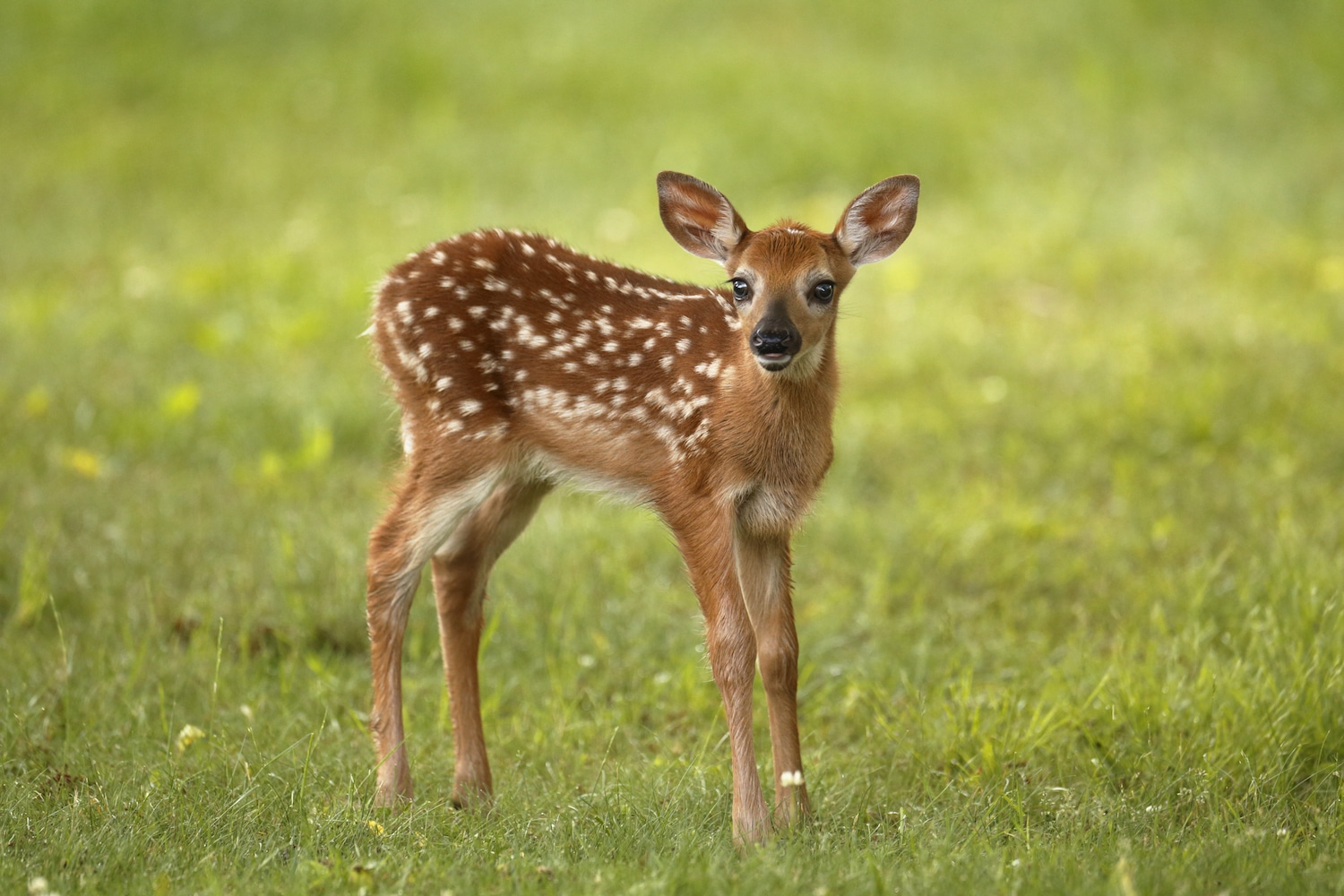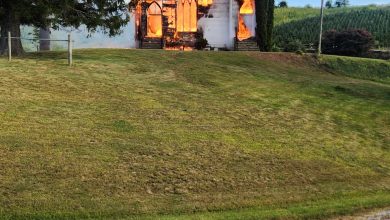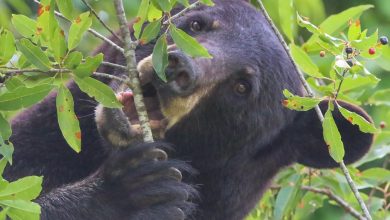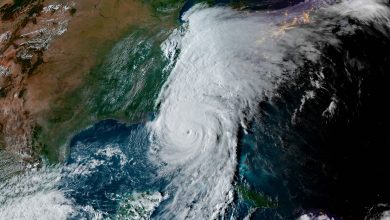
Last Updated on June 16, 2021 3:07 pm
RALEIGH, N.C. (June 15, 2021) — With fawning season in full swing, the N.C. Wildlife Resources Commission is once again reminding people not to approach, touch or remove any white-tailed deer fawns they encounter over the next few weeks.
From late April through June, white-tailed does across North Carolina are giving birth. Whitetails are a “hider” species, which means the female will hide her fawn in vegetation during the first two or three weeks of its life as she feeds. When left alone fawns have an excellent chance of survival. Their dappled coat and lack of scent keep them well camouflaged and usually undetected by predators in the wild. Fawns are also well-equipped to protect themselves. By the time they are 5 days old, they can outrun a human. At 6 to 10 weeks of age, fawns can escape most predators.
Since May, Wildlife Commission biologists and law enforcement officers have received an abundance of calls from people in western North Carolina who have captured fawns that they thought were abandoned.
“Each year, well-intentioned individuals remove fawns from the wild that are mistakenly assumed to be orphaned or abandoned,” said Justin McVey, the Commission’s district biologist for the 12 westernmost counties in state. “It is rare for a doe to abandon her fawn. She may, however, leave the fawn up to hours at a time to feed and return periodically to nurse.”
Officials urge the public that if they find a fawn to leave it where it is and check on it the following day. If it is still there and bleating loudly, appears thin, injured or has visible diarrhea, do not remove it. Instead, contact a local, permitted fawn rehabilitator. Rehabilitator information is available on the agency’s website, ncwildlife.org.
If a fawn has been removed from the wild, biologists advise taking it back to where it was found — but only if the fawn has been held for less than 48 hours, the maximum time when a doe usually will return for her fawn. After 48 hours, or if you have given it any food, contact a local, permitted fawn rehabilitator.
“Most people are ill-equipped to care for a fawn, so their misguided attempts to “save” an abandoned fawn typically do more harm than good. The survival rate of the fawn significantly decreases once taken from their natural environment, and it is likely they’ll never be reunited with their mothers,” stated McVey. “It’s important to leave wildlife in the wild and to contact a trained wildlife rehabilitator if you suspect the animal needs help.”
Besides being biologically irresponsible to remove a fawn from the wild, it is also illegal. Only certified wildlife rehabilitators have permits to keep white-tailed deer in captivity.
Learn more about white-tailed deer in North Carolina, visit the Commission’s white-tailed deer page.

















